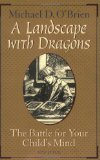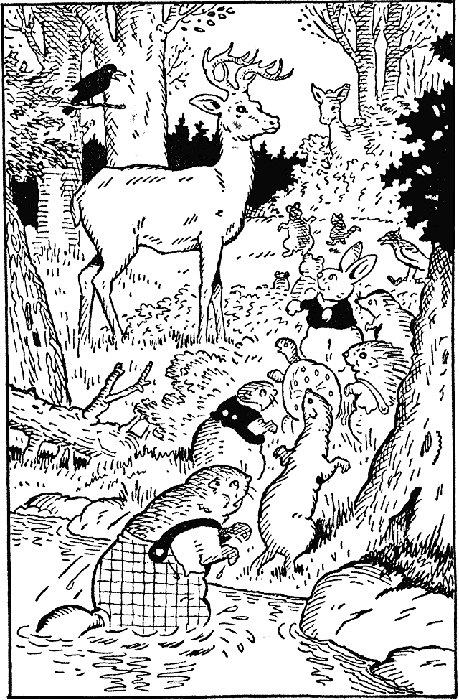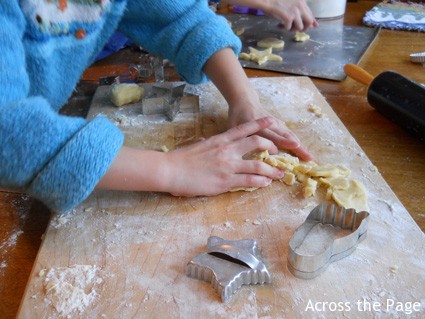A Landscape with Dragons
 I didn’t like this book very much.
I didn’t like this book very much.
At first, I thought I would. It seemed to promise a systematic look at fantasy stories. But ultimately A Landscape with Dragons is too alarmist for me. O’Brien makes lots of sweeping claims about the decay of children’s literature and the collapse of culture, and his prescription for parents is vigilance. He offers a scale by which Christian parents should preview our children’s books:
- Material that is entirely good*.
- Material that is fundamentally good but flawed in some details.
- Material that appears good on the surface but is fundamentally flawed.
- Material that is blatantly evil, rotten to the core.
(*Note: “Good” is a moral category in this scale, not a literary one.) O’Brien offers his own “analysis” of a wide array of children’s books and movies. There is more plot summary than analysis, and the analysis is primarily aimed at raising the alarm that this or that book contains disturbing “symbol inversion.” Here are a few samples of the tone:
[These films’] impact must be understood in the context of the much larger movement that is inverting the symbol-life that grew from the Judeo-Christian revelation… This is an anti-culture pouring in to take its place.
In the new juvenile literature there is a relentless preoccupation with spiritual powers, with the occult, with perceptions of good and evil that are almost always blurred and at times downright inverted. At least in the old days dragons looked and acted like dragons.
The loss of our world of symbols is a result of a deliberate attack upon truth, and this loss is occurring with astonishing rapidity. On practically every level of culture, good is no longer represented as good but rather as a prejudice held by a limited religious system (Christianity). Neither is evil any longer presented as evil in the way we once understood it.
There is, probably, some truth in O’Brien’s observations. Certainly I found myself nodding in agreement with some passages. What alienates me are the extremist terms, the sweeping scope, and the nostalgia he offers as an appraisal category. It sounds more like what Wendell Berry calls the “‘ain’t it awful’ conversation.” I find it hard to take seriously.
What seems most troubling to O’Brien is the fact that the meanings attributed to symbols slip and slide. It’s not so much that evil things, like murder, are now being seen as good. It’s that the symbols are changing, and this to O’Brien is dangerous. For instance, as the title indicates, one of the symbols he discusses is dragons, and the fact that there are a number of friendly dragons that have surfaced in literature. If the dragons went on being destroyers and thieves and murderers, and were still presented as heroes, I’d be concerned. But they’re not. The “friendly dragons” in the books I know of are, well, friendly — not greedy or murdering.
This isn’t a problem for me, but it is for O’Brien, who thinks a dangerous cultural incoherence is happening: “The purpose of dragons in literature, and of the fascination children have for them, is to arm the soul with an ever-developing discernment of spirits.” However, he writes,
Something is happening in modern culture that is unprecedented in human history. At the same time that the skills of the mind, especially the power of discernment, are weakened, many of the symbols of the Western world are being turned topsy-turvy.
I’m not sure what to do with that. “Unprecedented in human history” always provokes my skepticism. Also, the emphasis seems off-center… Symbols are mere signs of some invisible reality. They, like all signs including words, can evolve over time. Languages are always changing. Why is it so scary that certain symbols may be used differently in different eras — as long as the notions of good and evil aren’t changing?
For Christians, it’s worthwhile to think of how Jesus was not recognized by some because he came in a package they didn’t expect. I think we need to be cautious about how much uniformity we demand of literary “packaging.” It’s not that I’m casual about the absoluteness of scriptural teachings. But I don’t see why we need to insist that they must always be packaged in the same literary trappings for all time.
Really, no one gets off without a grim shake of the head in this book. George MacDonald is too universal. Madeleine L’Engle is classed as a “neo-pagan.” That Hideous Strength is brilliant, but then Lewis has to go and put Merlin in there — how confusing for children! (As if it’s a children’s book…) This was written before the vampire craze, which I’ve steered utterly away from, and the Harry Potter craze, which I tasted and found wanting. Surely they’d make out poorly in these pages too.
And maybe there is something worthwhile accomplished through this kind of dissecting and labeling. But I just seem to take a more relaxed approach. I know there is something in almost every book to make you think, “That’s not right…” Isn’t that one way books are like life? They can provide insight into profound truths, but they also force you to think and reconcile. There are things I am doing to prepare my children to read well (see last few paragraphs). But pre-reading, and trashing, every story they pick up isn’t the way I’m going to go about it.
O’Brien writes, “A child’s hunger for literature (visual or printed) is his quest for a ‘more real world’. He needs to know what is truly heroic in simple, memorable terms. He needs to see the hidden foundations of the world before the complexities and nuances of the modern mind come flooding in to overwhelm his perceptions.” I would agree with this, actually, and I wouldn’t propose dishing up moral confusion for my children’s pleasure reading. I believe in laying a good foundation.
But how to go about it? There is something too grim, and frankly, too fearful, about O’Brien’s approach. If we believe God has created us in his image, with an inherent restless desire for Truth and for reconciliation with him, what is O’Brien so scared of? I don’t buy the notion that my role as a parent is to hide from my children all books that don’t match my worldview. But I do believe there are stages of maturity, stages of readiness for processing certain aspects of experience.
O’Brien’s book reinforces what most of us probably already know: there are plenty of problematic books out there. I don’t really feel reading this has helped me to know how to deal with that. All I know is that I want to cultivate open lines of communication so the kids can bring me the things that disturb them in what they read. I want them to have a foundation of good stories, which I’m trying to lay in these years when I have more control over their reading. And I want to make sure that they have a solid foundation in biblical stories and concepts against which to measure what they read or hear elsewhere. Beyond that, I still don’t really have a plan.
Meantime, I aspire to be like Corrie Ten Boom’s father in The Hiding Place, who responds to the young Corrie’s questions one day about “sexsin” this way:
He turned to look at me, as he always did when answering a question, but to my surprise he said nothing. At last he stood up, lifted his traveling case from the rack over our heads, and set it on the floor.
“Will you carry it off the train, Corrie?” he said.
I stood up and tugged at it… “It’s too heavy,” I said.
“Yes,” he said. “And it would be a pretty poor father who would ask his little girl to carry such a load. It’s the same way, Corrie, with knowledge. Some knowledge is too heavy for children. When you are older and stronger you can bear it. For now you must trust me to carry it for you.”
So there it is, an amazingly too-long, and perhaps not terribly coherent, book engagement. As is now obvious, this book got me thinking about lots of different things. Some of it I really liked. But the panicky tone eventually prevented me from absorbing it very fully. The next book on my list will, hopefully, provide an interesting contrast to this one, as it’s about how to read “Christianly” — how to read with love, and not just how to “murder to dissect.”
This is way too long, but still, I want to conclude with a passage from A Landscape with Dragons that I really liked. It concerns the value of reading, and of the detachment it provides. Better to end on a more positive note, in the hope that someone else may read this book and share their thoughts:
Most of us do not learn about the nature of reality through theology, philosophy, or higher mathematics. But all of us readily grasp the language of parable drawn from the universal human story. The forms may be dressed in elaborate costumes and enact impossible dramas, but they enable the lover of tales to step outside of himself for a brief time to gaze upon his own disguised world. What is the value of this temporary detachment? It is an imaginative withdrawal from the tyranny of the immediate, the flood of words and sensory images that often overwhelm (and just as often limit) our understanding of the real world. A rare objectivity and insight can be imparted regarding this world’s struggle for spiritual integrity.


